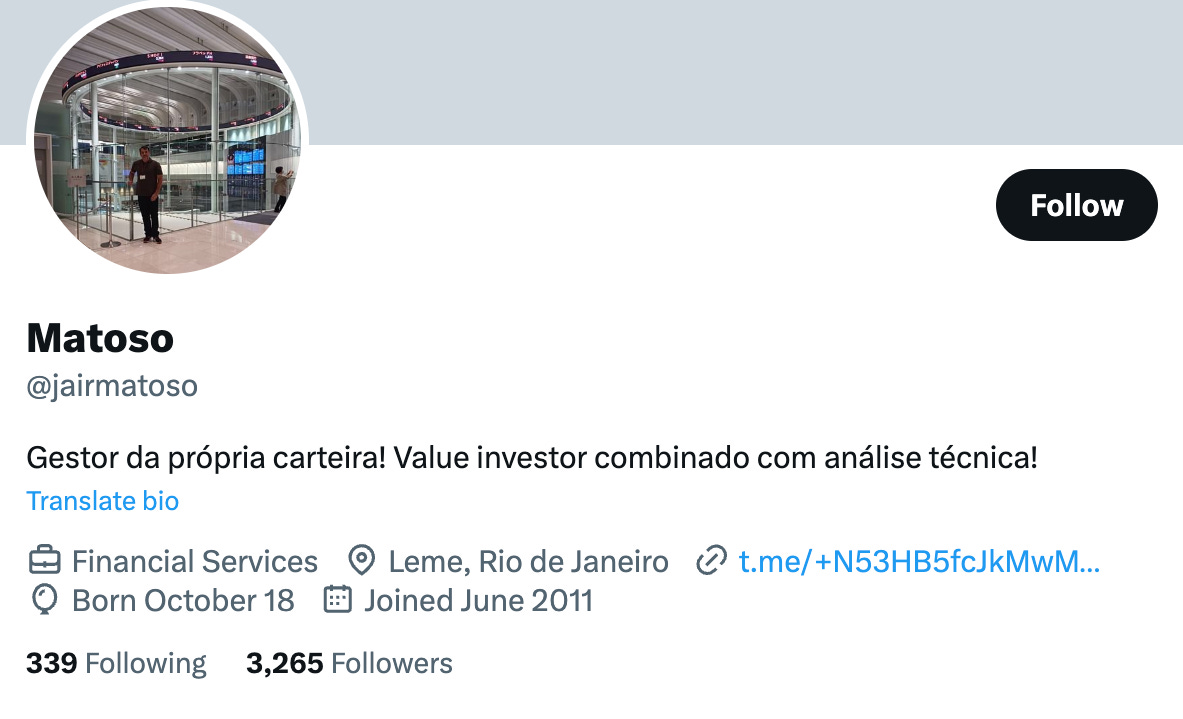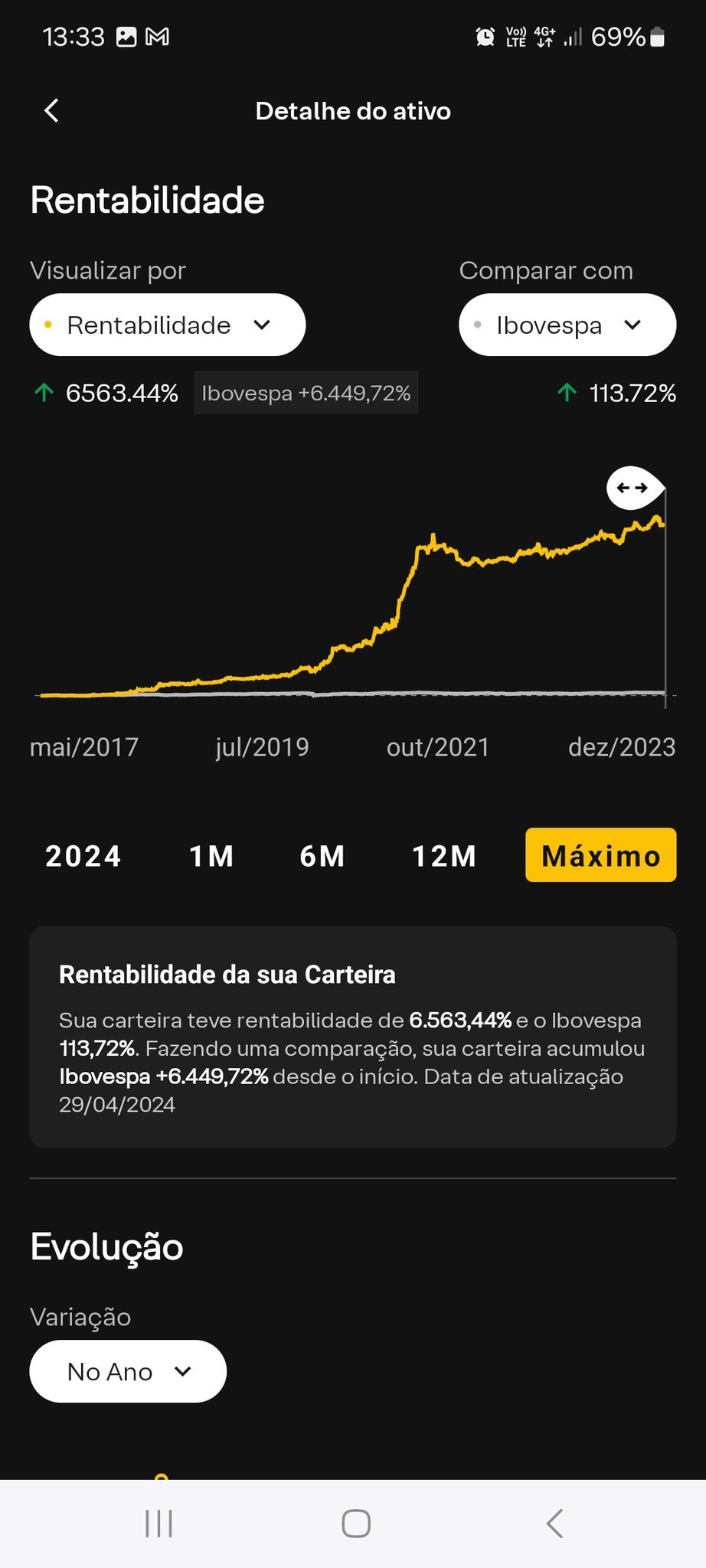Today I have the pleasure of interviewing Brazilian investor Matoso
From January 2017 to April 2024 his historic performance will be the envy of anyone.
His portfolio returned more than 6563.44% in the period, versus 113.72% for Ibovespa.
He multiplied the invested capital by 66x!
This guy knows how to generate real value.
Shall we meet him?
BS: Matoso, could you tell us a little about yourself?
JM: I am an economist, 43 years old, I have worked in the financial market for 6 years in the corporate banking area of an investment bank and in the real estate investment area of a large pension fund. I have been living exclusively on the stock market for 6 years.
BS: What is your strategy for making money on the stock market?
JM: Look for assets with momentum and great potential, whatever they may be.
BS: What is your process for finding a new buy opportunity? What filters do you use?
JM: I focus more on micro and small caps, but obviously, if I see opportunities in others, I have no “prejudice”!
My process involves studying the results of companies and looking for signs that there is a great chance of improvement in the short/medium term, whether due to market issues in which the company operates, operational changes, capital structure, etc.
I read the old Twitter a lot and I have a very good support network to filter what to study first. I use graphical analysis to "validate" what I'm seeing.
BS: How do you value a share: DCF, Multiples, implied IRR, a mix of the above, …?
JM: It depends on the sector, market moment and the asset I am buying.
For certain situations, I use more multiples, sometimes more of a mix.
There is no right answer to this, especially since I operate in everything.
BS: How do you like to build your stock portfolio, considering the number of companies, sectors and concentration?
JM: Nowadays I "diversify" more, sometimes having up to 15 stocks.
But I've already been all in. In fact, for those who have "small" portfolios, this is what I suggest to try to improve levels.
The all-ins that worked and made me change my level were UNIP6, at the time of the attempted delisting in 2017, and TASA4, in its turnaround during the Bolsonaro government.
I don't care much about sectoral diversification... at a time like the one we are experiencing today, in the expectation of further falls in the SELIC, I focus on "cheap" securities sensitive to interest rates.
BS: How often do you like to rebalance your portfolio?
JM: I don't have anything plastered. If the result is very different from what I had imagined or/and the graph shows me that there is something wrong, I skip it.
There's no point in me thinking I'm right and the market thinking differently than my model.
I am not a long-term investor.
BS: How long on average do you hold a position in your portfolio?
JM: I think my maximum was 1 and a half years with the same stock… but, on average, I think it was less than that.
BS: Do you believe that graphical analysis, together with fundamental analysis, can help with the buying and selling points of shares?
JM: Yes, that's what I do. Graphical analysis gives you the momentum. Knowing both sides, fundamental analysis and technical analysis, is a huge difference. Gets you out of a lot of trouble.
BS: What are your favorite sectors on the Stock Exchange? And the ones you avoid? Why?
JM: I don't have favorite sectors. I already earned money from petrochemicals to weapons…
What I can say is that I don't remember earning anything from the medical/hospital sector. It's always expensive when I look.
I don't avoid any sector. Wherever I think there is an opportunity, I will go.
BS: Do you use derivatives? What is your strategy?
JM: I only use derivatives for small day-to-day trades… I don’t like this type of risk.
I could use simpler operations such as financing, etc., but unfortunately our options market is very small.
BS: What is the cheapest company on the stock market today?





